A kiddie pool or a large galvanized tub with loose soil or sand are only a few DIY dust bath ideas.
I believe dust bath areas should be quick and easy to make without investing many resources and much effort.
So, if you have no experience in building these, I have curated 15 of the best DIY dust bath ideas that fit all poultry birds.
1. Basic Sand and Ash Dust Bath
If you don’t want to bother too much with building a dust bath, you can use a basic dust bath containing only sand and ash.

I suggest you use builder sand or construction sand, which are free. Play sand will cost you money. You might need wood or fire ash from the stove, which acts as a natural parasite control.
You can try 60% sand and 40% ash or simply use a 50:50 ratio.
Mix them well and look for something that holds the mixture without spoiling. It can be a proper sturdy container or a dug-out hole in the ground.
Shallow wooden boxes, plastic tubs, useless travel bags, and suitcases can be ideal container options.
2. Herbal Dust Bath with Dried Herbs
Herbs have a strong fragrance and medical properties that are beneficial to poultry.
Some herbs, including lavender, wormwood, rosemary, mint, thyme, oregano, and ginger, contain anti-inflammatory, anti-fungal, and anti-septic properties.
They not only relax birds but also repel bugs and rodents, which helps make dust baths clean and without contaminants.
Remember, you have to add dried leaves, flowers, or stems.
Dried herbs have a stronger smell than fresh ones, as the drying process concentrates the essential oils and aromatic compounds.
You can either use tiny particles of herbs or grind them to powder.
Anyway, add the dried herbs to the dust bath. I recommend you use 5 – 10% of the whole bath content.
3. Deep Pit Ground Dust Bath
If you don’t provide your poultry birds with a ready-made dust bath, they make one or many ditch earth baths for themselves.
As they have scratching habits with their claws, finding loose soil and digging a pit ground is not new to birds.
You can facilitate a bit with this natural dust bath as birds cannot dig the earth deep enough to roll and flap their bodies.

So, I suggest you dig a ground hole that is at least 1.5 feet deep, 2 feet wide, and 3 feet long.
It works best in dry, sandy areas.
As you cannot move the pit, you need to plan it well before creating it. You can create holes in a place where birds generally take dust baths.
Also, you need to find some ways to prevent waterlogging in the hole.
6. Covered Dust Bath for Rainy Seasons
Rainy months or wet weather always trouble birds, as they forage food outdoors and take a dust bath, as open ground or earth is useless.
Also, the uncovered dust bath doesn’t work if wet and condensed.
So, you need a plastic container or wooden box with a simple roof. I suggest you install a standard roof made from iron, wood, or anything waterproof.
You can create a roof shape from tilting one side and gable to curved style.
Make sure, the roof withstand wind and rain and keep the dust bath in a place that keep it dry and protected from bird predators.
5. Wooden Crate Dust Bath
As birds like to take dust baths in groups, you need a container that can hold at least 3 adult chickens or other poultry.
I would suggest you choose container with 12 inch depth, 15 inch width and 24 inch length. You can use any old wooden crate.
A fruit or vegetable box can be the best for this purpose.
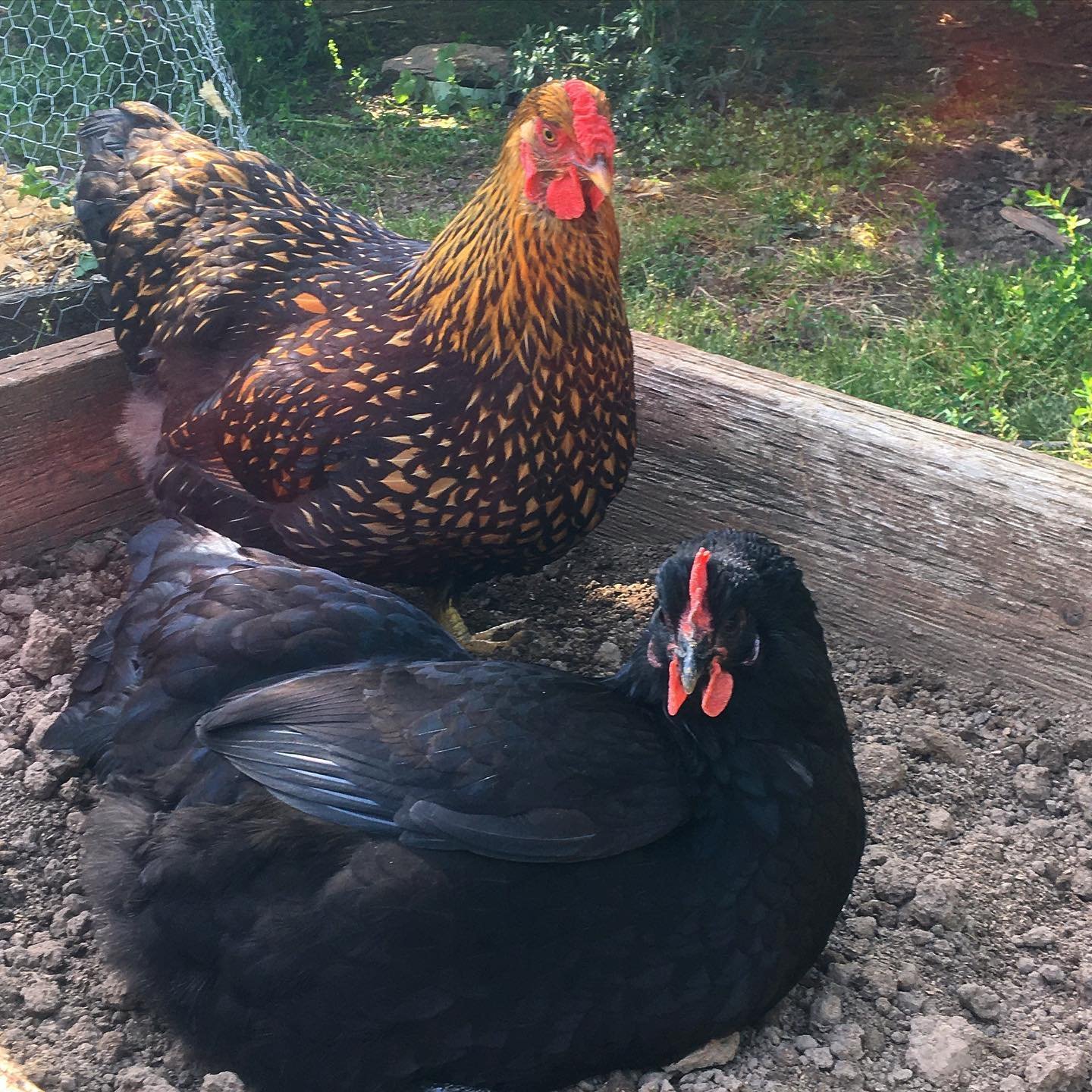
If you don’t have any, you can use a simple wooden box for chicken dust bathing.
Wooden boxes are portable, protect against wind and rain. So, you can place them under the shade in the summer and bring them out under the sunlight in winter.
Your birds can take both sunbath and dust bath in the same container.
6. Raised Dust Bath for Small Spaces
These are perfect for small game birds like quails, squabs, patridges, or small backyard coops.
So, useless circular containers with enough depth on the farm and homestead can be used here. They include old planters, pails, and dustbins.
Raised dust baths keep the dust from spreading too much.
You can place them inside the aviaries or pens, maintaining some distance from the netting or boundary.
7. Repurposed Tire Dust Bath
I love this idea as tires are sturdy, durable, and easy to move.
You should use old tires that do not have iron wire coming out. If they have wires, your birds will be pierced and injured.
Farms and homesteads have many old tires from tractors, harvesters, loaders, tillers, and many other vehicles.
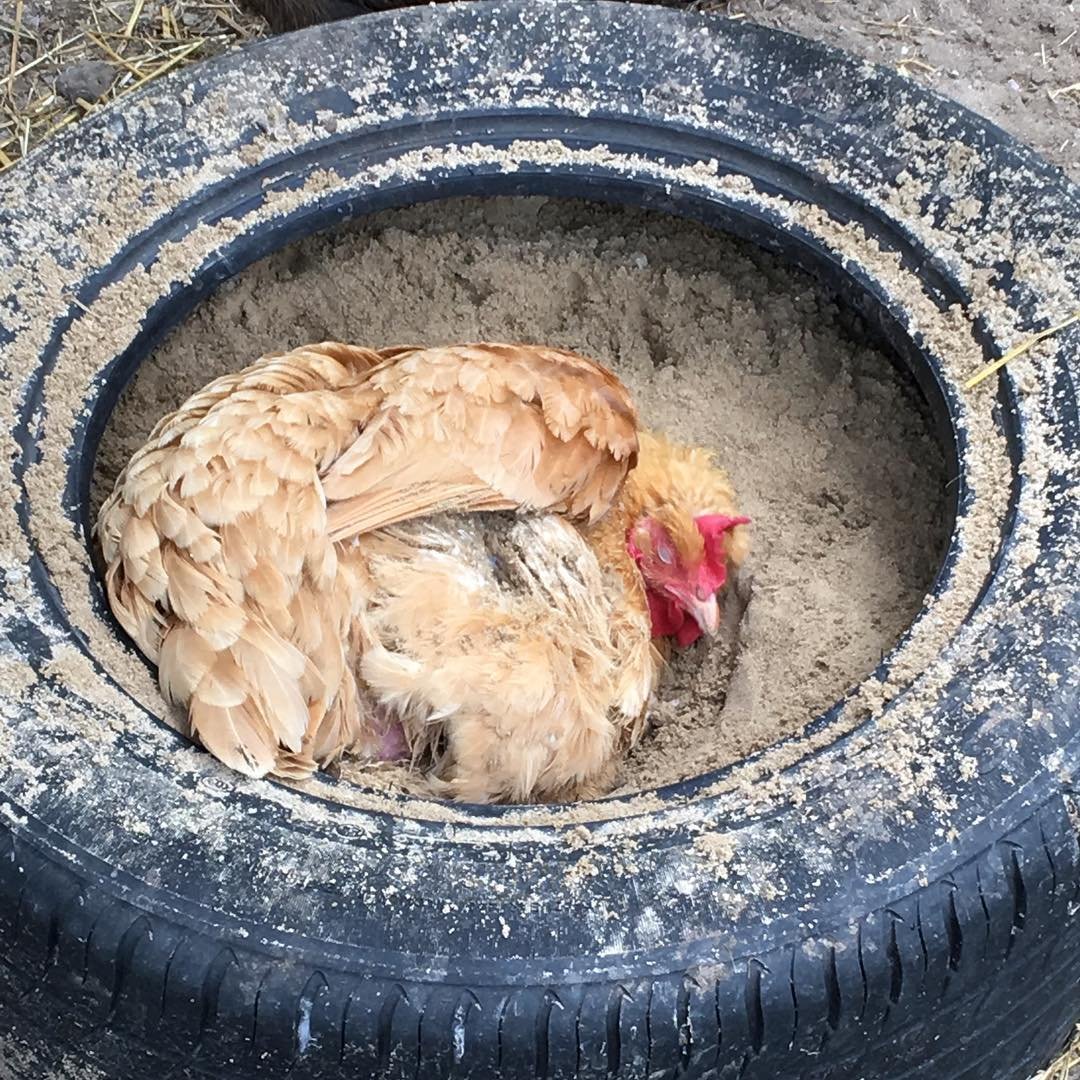
The bigger the size, the more space for dust bath.
So, you can create bigger bust baths for giant birds from tractor tires, while car tires and smaller tires are used for small baths and smaller birds.
Place the tire in a desired place and fill it with sand, ash, and soil mix. And done!
You can also place multiple tires in a row to decorate the farm or homestead and paint them all.
8. Sandpit-Style Dust Bath
It is similar to a child’s sandbox but for chickens and quails. Birds will happily play and enjoy their dust bath near their shelter.
The size of the bird sandpit depends on how much space your runs and coops have and how many birds you want to make for.
You can build it to be as small as 12 inches deep, 15 inches wide, and 15 inches long.
If you have enough space, you can extend the length and width to 25 – 30 inches with the same depth as above.
You can place these dust baths in the coop or runs where chickens enjoy other activities.
9. Compost-Enriched Dust Bath
Do you know you can also add compost to the dust bath?
Yes, it adds extra minerals for birds. Unlike solid earth, compost provides loose content, making it easy for birds to roll and flap them in dust baths.
Many keepers complain about having bacteria and fungi in manure or compost.
But that’s wet and moist compost, which can also attract bugs and rodents.
So, I suggest only using dry compost and not sprinkling water over it. You can add an equal amount of compost and wooden ash to make a dust bath.
10. Upcycled Metal Tub Dust Bath
Galvanized metal tubs are durable and versatile used in several homestead purposes including planter, livestock drinker, raised garden beds, and feed storage.
I had many such containers in my homestead long ago.
When the livestock drinker and feed storage were old, I repurposed them for flower pots and mini herb gardens. Now, I am left with only a few of them.
Of course, you can create a ready-made dust bath.
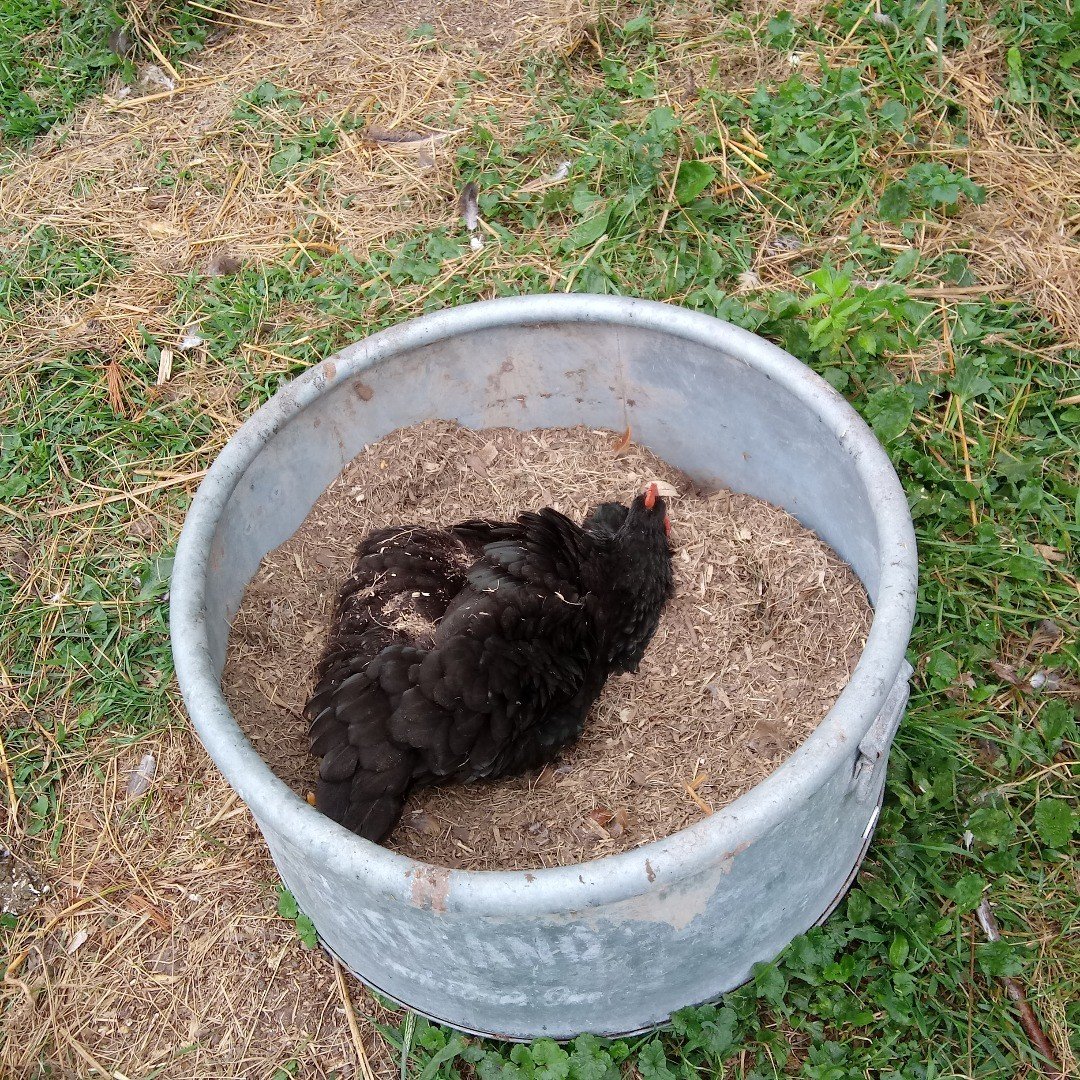
When repurposing metal tubs, make sure you have pierced proper drainage holes to expel the water.
Also, metal tubs are overheating, so you need to place the tubs under the shade or cool place.
11. Straw Bale Enclosure Dust Bath
Straw bale box has also several uses including gardening and storgae. The wooden box are sturdy, spacious and good for containing dust and earth for dust bath.
But I am talking about only straw bales that also create enclosure for dust bath.
They can act as natural walls and provide wind protection, natural insulation. Also, they are easy to setup as a container.
You can use it the same as a raised bed or compost pile.
I suggest you design the straw bale walls with a diameter of 12 X 12 X 12 inches. 26 x16 x19 inches also good diameter for dust bath.
As straw bale enclouure dust bath is unmovable, you need to place that is free from rain, predator and easy access to birds.
12. Pallet Wood-Framed Dust Bath
After your hens finish laying eggs, you can repurpose pallet wood for a dust bath frame.
These structures are affordable and customizable and make sturdy dust baths.
All you need 3 – 4 pallet woods of the same size. Select one pallet which can work as a main frame and strip woods from other pallets.
Also, remove the center boards and blacks from the main pallet.
Now, position the main frame and arrange boards on the base of the main pallet and the sides of the pallet. Cut down the woods to suit the best and fill the dust bath ingredients.
13. Multi-Level Dust Bath for Mixed Poultry
If you have different bird species on your farm or homestead and have enough space, you can create multi-section dust baths.
There will be different and separate sections for chickens, quails, ducks, and other domestic birds.

For this, you may need a detailed plan for the dust bath container size for birds ranging from smaller to bigger.
Then, arrange the dust bath in a place suitable for each bird flock. Don’t allow giant birds to interfere with the smaller ones.
To avoid this, you can assign birds the designed dust baths in their own shelter (runs, aviary pen, or open ground)
14. DIY Hanging Dust Bath for Quails
How about a hanging dust bath? It’s a unique idea.
But that’s only for quails or smaller birds as they cannot hold the weight of large birds like chickens, ducks and peafowls.
Quails love contained spaces, and by using a hanging basket, you can create an elevated dust bath. This will be ideal for indoor or cage-based quail setups.
The concern is only what if it falls on the ground and spoils the dust bath even can injure the other birds.
So, you need to hang the bags in a sturdy structure with stronger stripes or wire.
Also, keepers need to check it frequently to prevent it from tipping. Change the bag or remove it from hanger if found old enough to tear.
15. Indoor Dust Bath for Winter Months
When it approaches winter, it becomes hard for farm birds to pasture and take a dust bath outdoors.
Also, many birds are cold sensitive, so it is also essential to create a dust bath inside the coop or a barn.
As it is indoors and requires sanitization, you need to consider selecting low-mess materials like diatomaceous earth (DE) and fine sand.
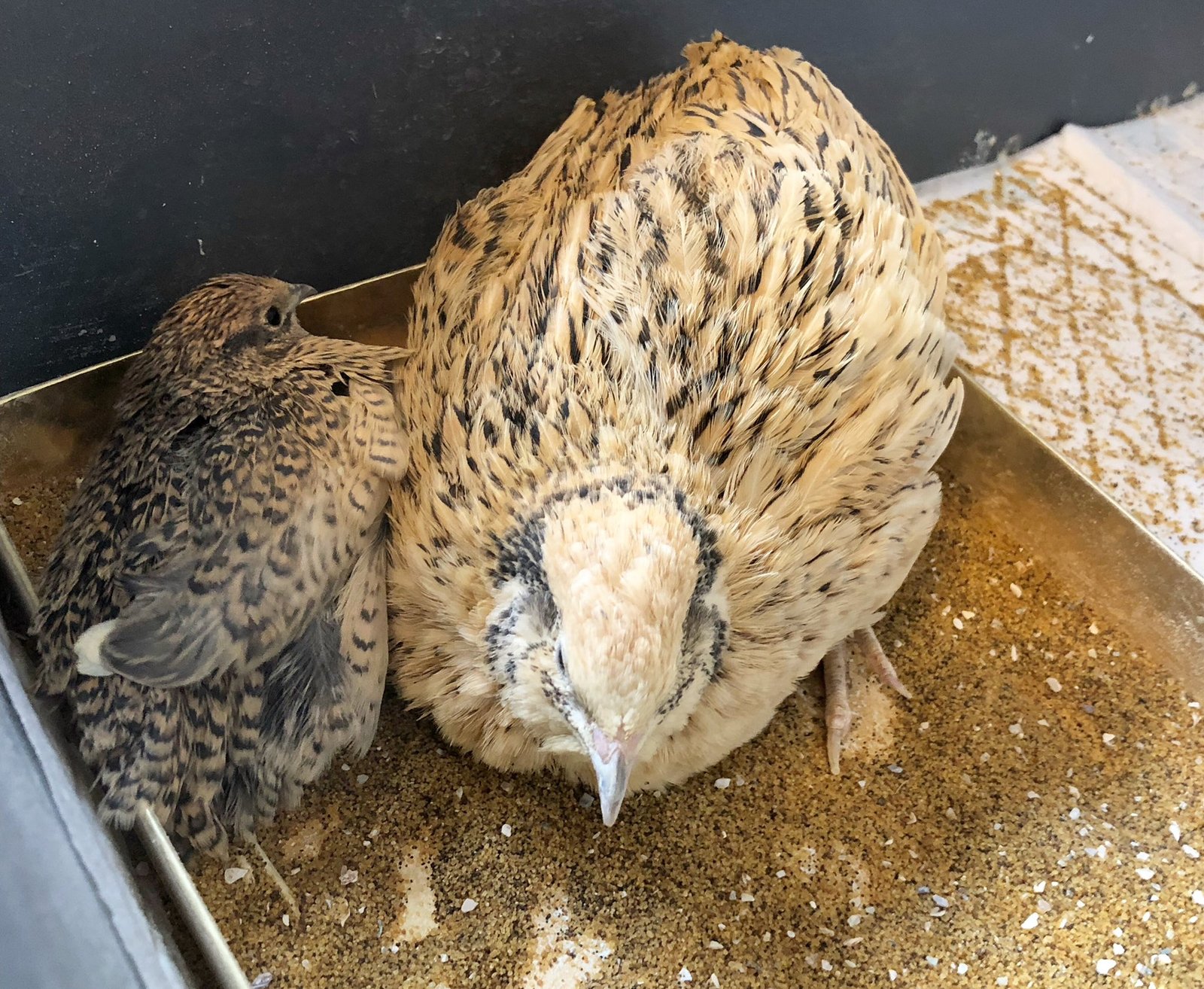
You can make dust bath collecting containers and curate ingredients like those mentioned above.
While placing indoors, I suggest you install the container or box in a place where birds have easy access and that doesn’t hinder the feeder and drinker.
Also, make sure the indoors has enough space for a dust bath.
Final Thoughts
DIY dust bath ideas not only save you some dollars, but you can also make the most of available resources frugally.
Ingredients are the same for all ideas containing loose soil or fine sands, wood ash, dried herbs, and other supplements.
The main work comes when making or collecting containers. So, you can get it based on the available space and the number of birds.



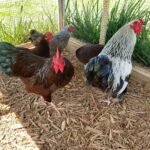
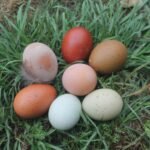

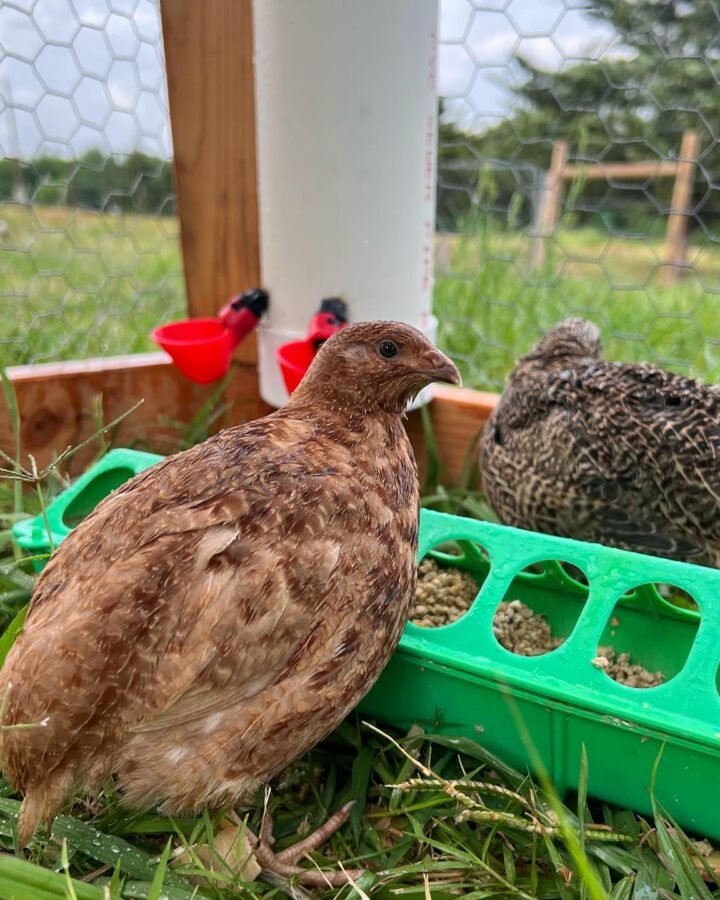
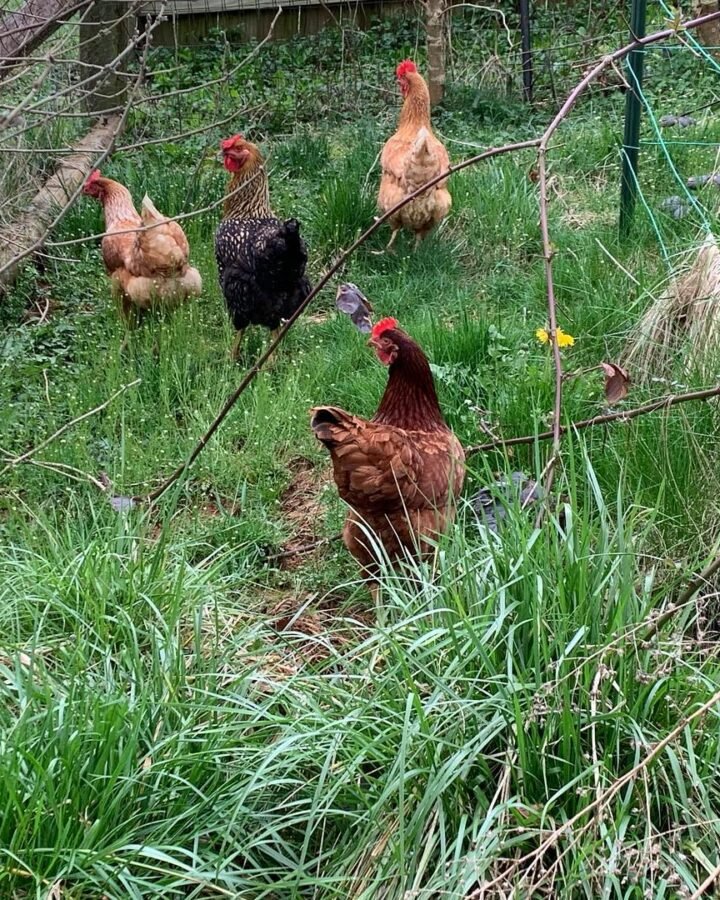
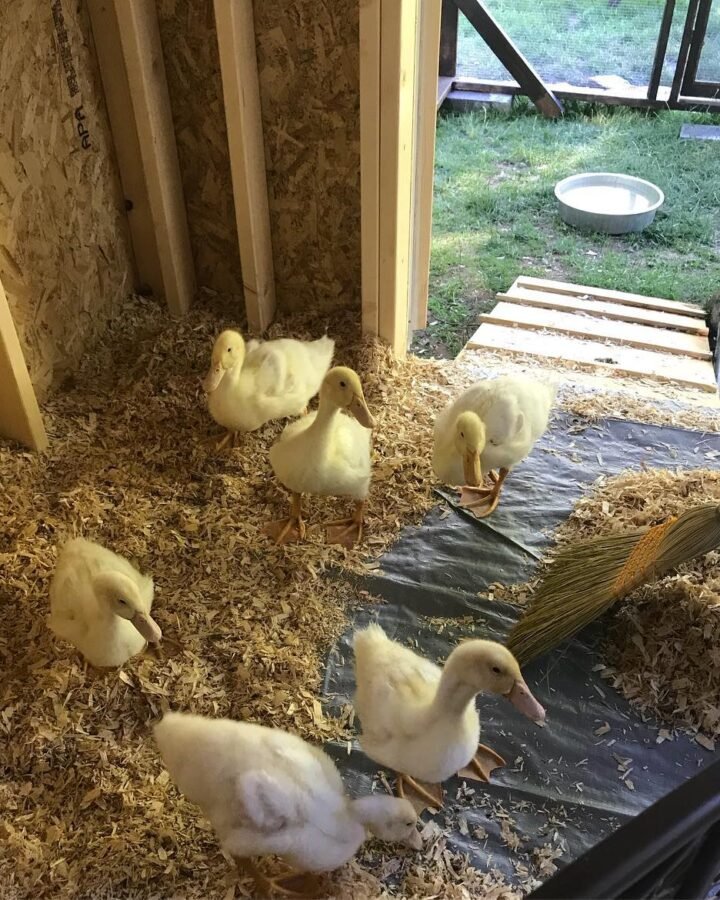

Leave a Reply